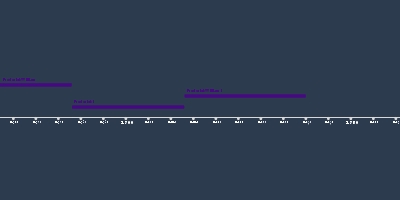Consumer Revolution (jan 1, 1920 – jan 1, 1970)
Description:
Fundamental innovations in the basic provision and consumption of goods and services marked the first steps of a consumer revolution that was at its height in the 1950s and 1960s. The arrival of a highly industrialized manufacturing system dedicated to mass-producing inexpensive goods, the establishment of efficient transportation systems that could bring these goods to national markets, and the rise of professional advertising experts to sell them were revolutionary in the consumer goods were made, marketed, and used by ordinary people.Some people embraced the way consumer goods modernized society and changed everyday lives, others felt threatened. Housework and private life were profoundly impacted by modern appliances like electric ovens, washing machines, refrigerators, telephones, and radios. Fashionable clothing and personal care products like shampoo, perfume, and makeup encouraged a “sex appeal” and linked attractiveness to the use of certain products. The mass production and marketing of automobiles and the rise of tourist agencies opened roads to increased mobility and travel.
Commercialized mass entertainment, like movies and radio, prospered. Professional sporting events grew in popularity. Print media thrived. Flashy restaurants, theatrical revues, and nightclubs dazzled citizens.
Department stores had developed by the 1890s and were prospering by the 1920s with enticing goods. Advertising campaigns, salespeople, and easy credit and return policies helped attract customers.
This change both undermined and reinforced social differences. Consumerism helped democratize Western society and helped break down old social barriers since anyone with the means to could purchase anything. It also reinforced social differences since manufacturers marketed to specific groups and only the wealthy could purchase certain items.
New household items transformed how women performed housework. Some manufacturers marketed to housewives, women, and young girls. The term “modern girl” describes an independent young woman who could vote, held a job, spent her salary on the latest fashions, applied makeup and smoked cigarettes, and used her sex appeal. This was in some ways a stereotype that women found hard to live up to, but it did loosen traditional limits on women’s behavior.
Socialist writers worried that consumer culture’s appeal undermine working-class radicalism due to its creation of passive consumers. Conservatives complained that consumerism harmed industrious artisans and undermined national traditions. Religious leaders disliked the growth of individualism and greedy materialism. Many fretted the decline of traditional values.
Entertainment, specifically cinema and radio, were huge influences of growing consumerism. Cinema first emerged in the U.S. around 1880. Europeans followed their creation of film establishments and companies. Films like Nosferatu and Metropolis thrilled audiences. They became big business on an international scale, with the U.S. in the lead. “Talkies” revived the national film industries. Cinema audiences grew rapidly in the 1930s. Movies were a medium for wartime propaganda. Russians like Sergei Eisenstein and Germans like Leni Riefenstahl effectively promoted their respective movements.
Experimental radio sets came about in the 1880s and the first major public broadcasts of news and special events was in the early 1920s. Every major country soon established national broadcasting networks. The British Parliament established an independent public corporation, the British Broadcasting Corporation. Leaders could use them to boost their popularity, as was the case with Roosevelt and British prime minister Stanley Baldwin, or spread radical ideas to massive audiences, like with Hitler and Mussolini.
Economic boom expanded the consumer revolution. Europeans could buy more than ever before, and they embraced the new products of consumer society after the war. Car ownership became common for better-paid workers. Household appliances and entertainment devices grew. The East Bloc trailed behind the West.
In the '60s, Europe entered a decade of economic growth and high wages, meaning the middle class could enjoy the benefits of the consumer revolution. The living standards of workers and immigrants did not rise as fast as the educated middle classes and the economic expansion did not always reach underdeveloped regions, but this “age of affluence” still brought prosperity to millions.
Consumerism grew the tourist industry. Household appliances were commonplace. U.S.-style self-service supermarkets were established across western Europe and changed the way food was produced, purchased, and prepared (yet threatened smaller businesses). This age was met with criticism from intellectuals and cultural critics. Some complained that rampant consumerism encouraged bland conformity. Others thought Europe was being Americanized.
Added to timeline:
Date:
jan 1, 1920
jan 1, 1970
~ 50 years
